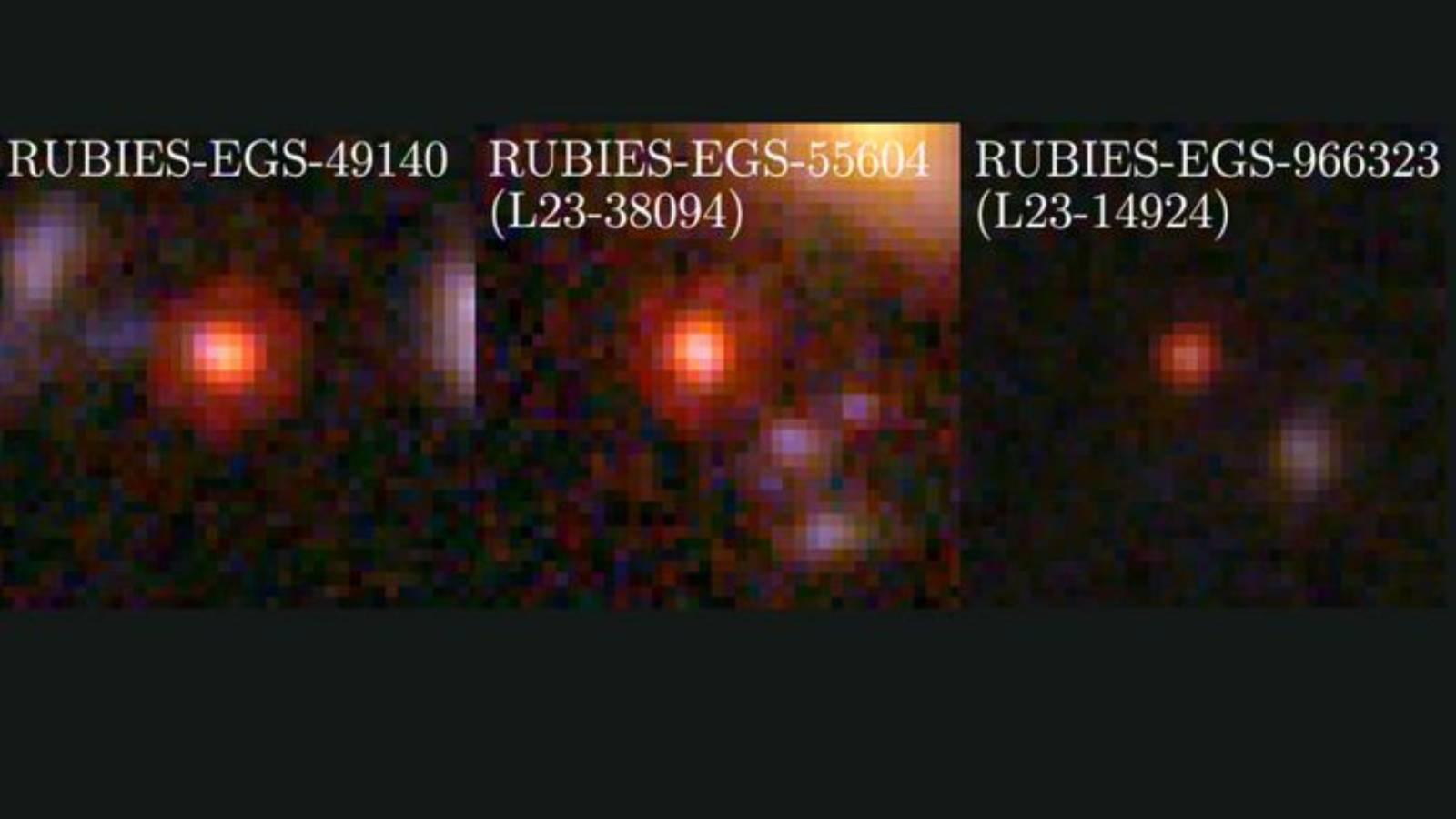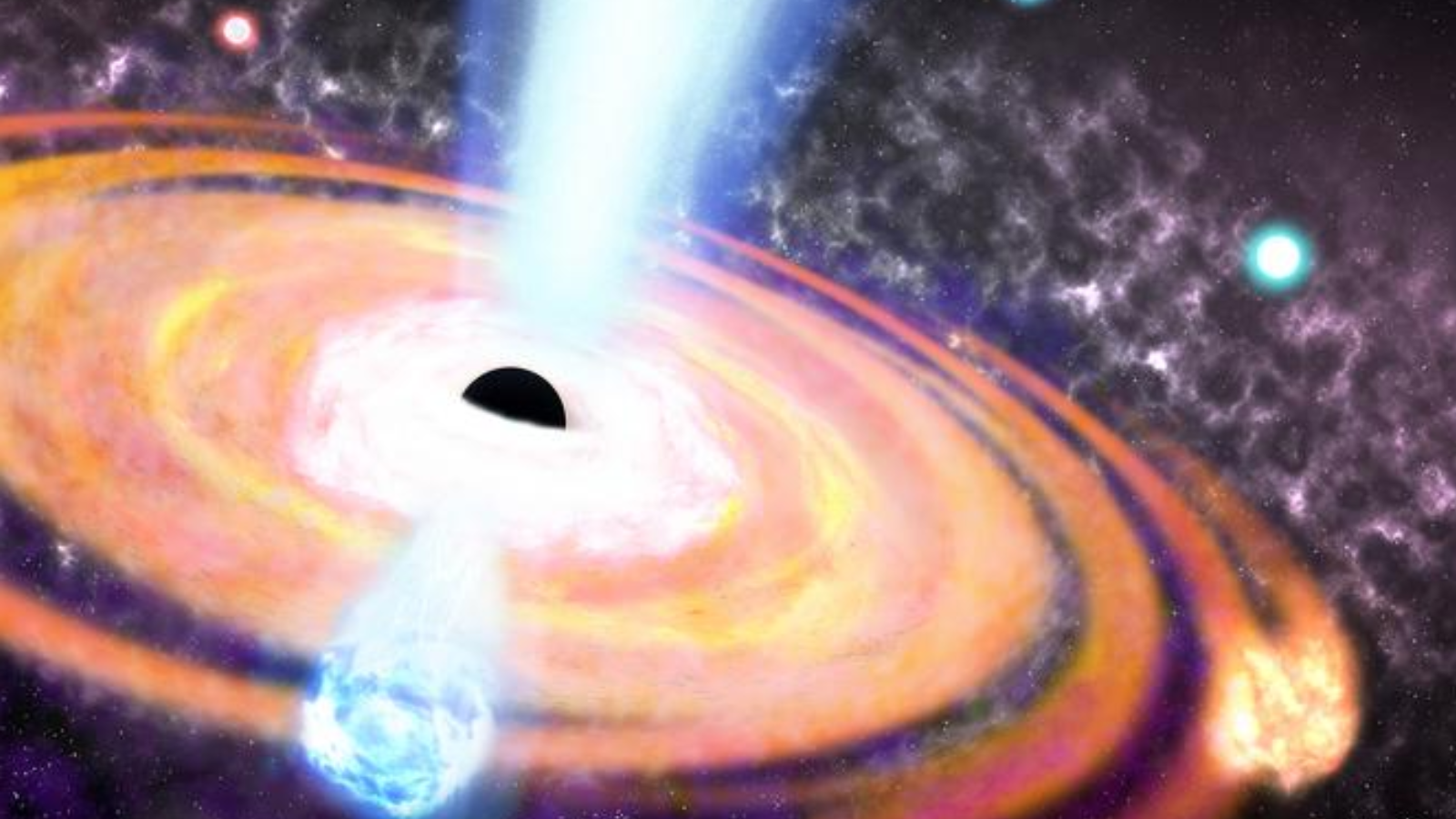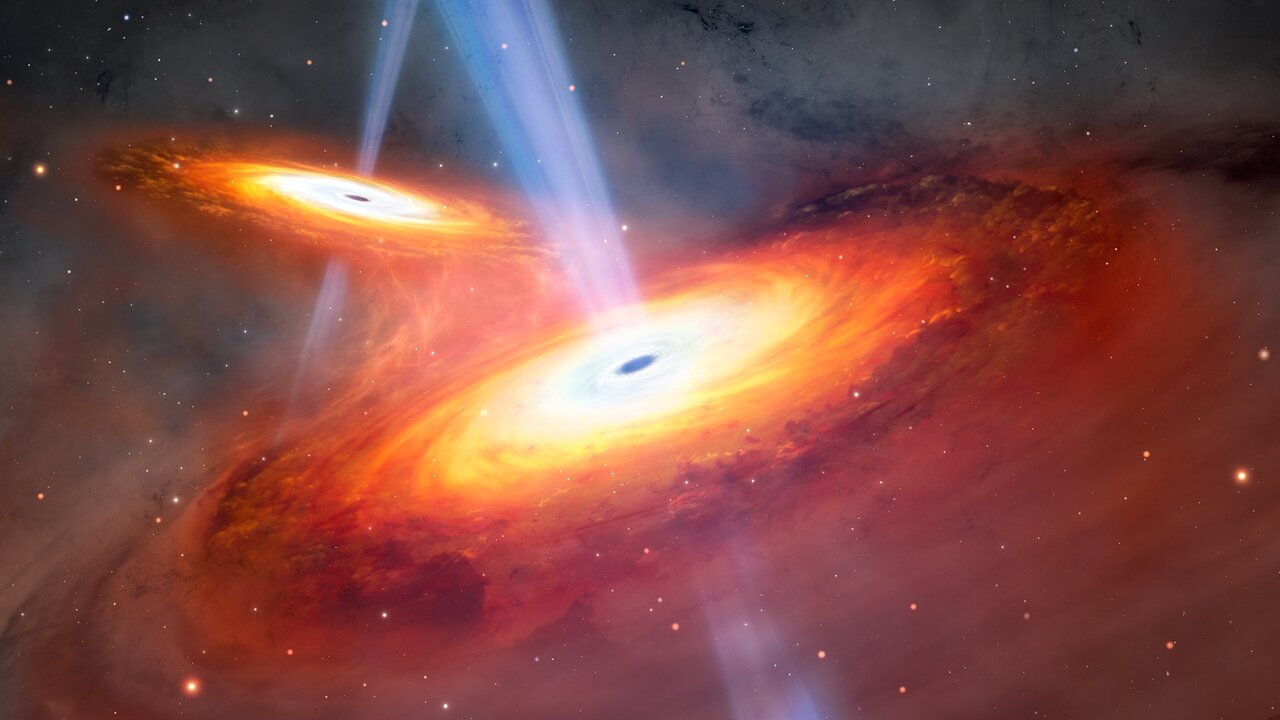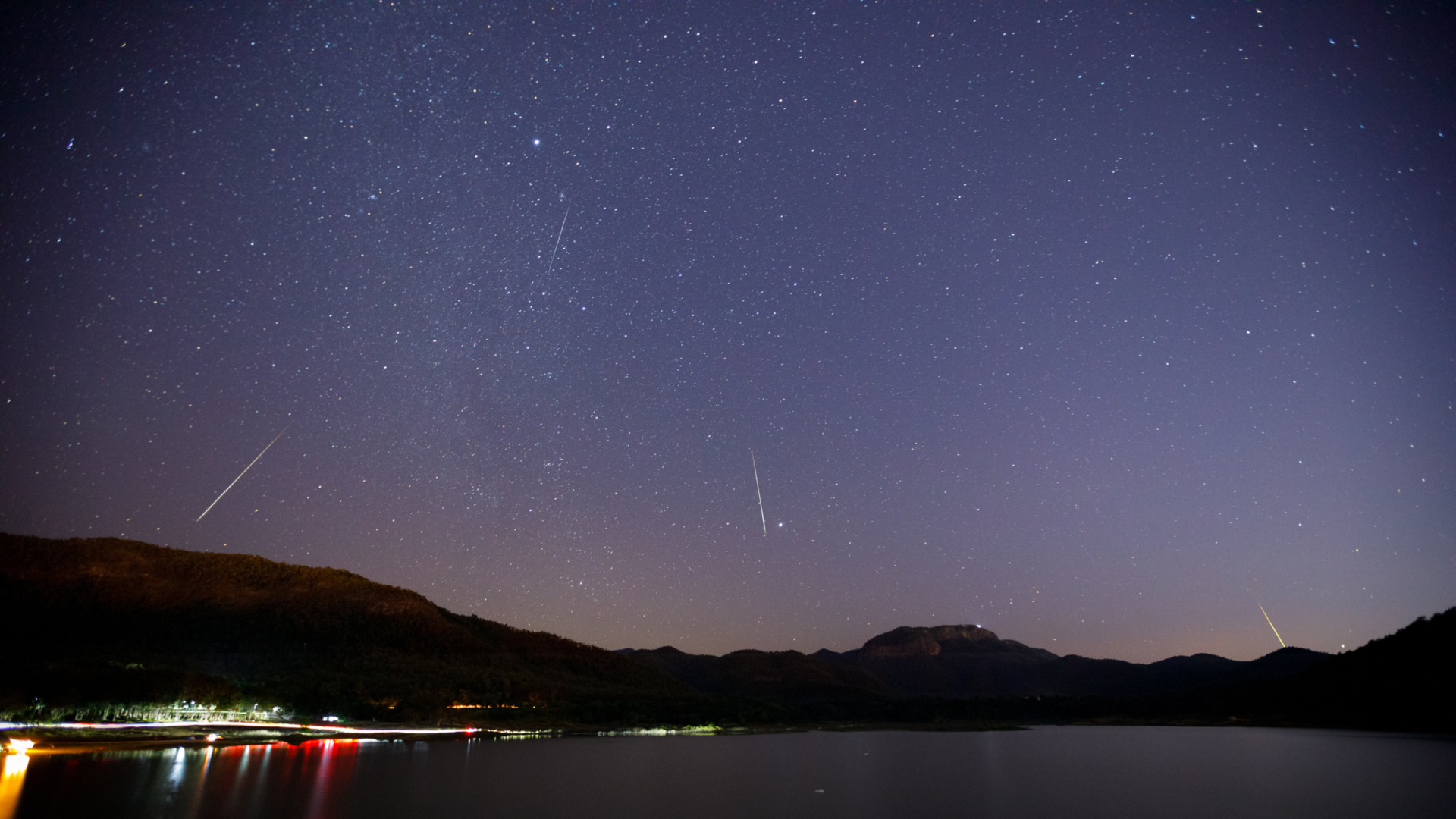Forbidden black holes and ancient stars hide in these 'tiny red dots' (image)
"This is, without a doubt, the most peculiar and interesting set of objects I've seen in my career."

Forget "little green men" — it is "little red dots" in the infant universe that caught the eye of the James Webb Space Telescope (JWST).
The odd red bodies, scientists say, hide stars that models suggest are "too old" to have lived during early cosmic times and black holes that measure up to thousands of times larger than the supermassive black hole at the heart of the Milky Way. Scientists believe these objects must have been born in a way unique to the early universe — by a method that seems to have ceased in the cosmos after around 1 billion years of its existence.
The three little red dots are seen as they were when the universe was between 600 million and 800 million years old. Though that may seem like a tremendously long time after the Big Bang, the fact that the universe is 13.8 billion years old means it was no more than 5% of its current age when these objects existed.
By confirming the existence of these dots in the early universe, these JWST findings could challenge what we know about the evolution of galaxies and the supermassive black holes that sit at their hearts.
Related: James Webb Space Telescope spies never-before-seen star behavior in distant nebula (video, photo)
The team, led by scientists from Penn State University, saw these mysterious crimson cosmic oddities when investigating the early universe with the JWST's Near Infrared Spectrograph (NIRSpec) instrument as part of the RUBIES survey.
"It's very confusing," team member Joel Leja, an assistant professor of astronomy and astrophysics at Penn State, said in a statement. "You can make this uncomfortably fit in our current model of the universe, but only if we evoke some exotic, insanely rapid formation at the beginning of time.
Breaking space news, the latest updates on rocket launches, skywatching events and more!
"This is, without a doubt, the most peculiar and interesting set of objects I've seen in my career."
What's behind the dots?
The researchers studied the intensity of different wavelengths of light coming from the little red dots. This revealed signs that the stars are hundreds of millions of years old — far older than is expected for stars at this early stage of the cosmos.
The researchers also saw traces of supermassive black holes within the little red dots' regions with masses equivalent to millions, sometimes even billions, of suns. These black holes are between 100 and 1,000 times as massive as Sagittarius A* (Sgr A*), the supermassive black hole at the heart of the Milky Way that sits just 26,000 light-years from Earth.
Both of these discoveries are not expected under current models of cosmic evolution, galaxy growth, or supermassive black hole formation. All of these theories suggest galaxies and supermassive black holes grow in lockstep — but this growth takes billions of years.
"We have confirmed that these appear to be packed with ancient stars — hundreds of millions of years old — in a universe that is only [600 million to 800 million years] old. Remarkably, these objects hold the record for the earliest signatures of old starlight," research leader Bingjie Wang, a postdoctoral scholar at Penn State, said in the statement. "It was totally unexpected to find old stars in a very young universe. The standard models of cosmology and galaxy formation have been incredibly successful, yet these luminous objects do not quite fit comfortably into those theories."
The team first spotted the little red dots while using the JWST back in July. At the time, the researchers immediately suspected the objects were actually galaxies that existed roughly 13.5 billion years ago.
Deeper investigation of these objects' light spectra confirmed these as galaxies that lived during the very dawn of time and also revealed that "overgrown" supermassive black holes and impossibly "old" stars were powering the red dots' impressive light output.
The team isn't yet certain how much of the light from the little red dots comes from each of these sources. That means these galaxies are either unexpectedly old and more massive than the Milky Way, having formed far earlier than models predict, or have normal amounts of mass yet overly massive black holes somehow — voids that are vastly more massive than a similar galaxy would have during the current epoch of the cosmos.
"Distinguishing between light from material falling into a black hole and light emitted from stars in these tiny, distant objects is challenging," Wang said. "That inability to tell the difference in the current dataset leaves ample room for interpretation of these intriguing objects."
That's no ordinary supermassive black hole!
Of course, all black holes have light-trapping boundaries called "event horizons," meaning that, however much light they contribute to the little red dots, it must come from the material that surrounds them rather than from within.
The tremendous gravitational influence of the black holes generates turbulent conditions in this material, which also feeds the black hole over time, heating it and causing it to glow brightly. Regions powered by supermassive black holes in this way are called "quasars," and the regions of their galaxies they sit in are known as "active galactic nuclei (AGNs)."
These newly found, "red dot" black hole regions could be different from other quasars, even those the JWST has already seen in the early universe. For instance, the red dot black holes seem to produce far more ultraviolet light than expected. Still, the most shocking thing about these supermassive black holes remains just how massive they seem.
"Normally, supermassive black holes are paired with galaxies," Leja said. "They grow up together and go through all their major life experiences together. But here, we have a fully formed adult black hole living inside of what should be a baby galaxy.
"That doesn't really make sense because these things should grow together, or at least that’s what we thought."
The red dot galaxies themselves are also surprising. They seem to be much smaller than other galaxies despite having almost as many stars. That means the red dot galaxies seem to consist of between 10 billion and 1 trillion stars crammed into a galaxy a few hundred light-years across with a volume 1,000 times smaller than the Milky Way.
To put that into context, if the Milky Way were reduced to the size of one of these red dot galaxies, then the closest star to the sun (Proxima Centauri, which is 4.2 light-years away) would be within the solar system. Additionally, the distance between the Earth and the Milky Way's supermassive black hole, Sgr A*, would be reduced from 26,000 light-years to just 26 light-years. That would see it and its surroundings appearing in the night sky over Earth.
"These early galaxies would be so dense with stars — stars that must have formed in a way we've never seen, under conditions we would never expect during a period in which we’d never expect to see them," Leja said. "And for whatever reason, the universe stopped making objects like these after just a couple of billion years. They are unique to the early universe."
The team intends to follow up on its findings with more observations of these confusing little red dots to understand the dots' mysteries better. This will include obtaining deeper spectra by pointing the JWST at the red objects for prolonged periods of time to obtain emission spectra of light associated with various elements. This could help unravel the contributions of ancient stars and supermassive black holes in the galaxies.
"There's another way that we could have a breakthrough, and that's just [having] the right idea," Leja concluded. "We have all these puzzle pieces, and they only fit if we ignore the fact that some of them are breaking. This problem is amenable to a stroke of genius that has so far eluded us, all of our collaborators, and the entire scientific community.
"Honestly, it's thrilling to have so much of this mystery left to figure out."
The team's research was published on June 26 in the journal Astrophysical Journal Letters.

Robert Lea is a science journalist in the U.K. whose articles have been published in Physics World, New Scientist, Astronomy Magazine, All About Space, Newsweek and ZME Science. He also writes about science communication for Elsevier and the European Journal of Physics. Rob holds a bachelor of science degree in physics and astronomy from the U.K.’s Open University. Follow him on Twitter @sciencef1rst.


